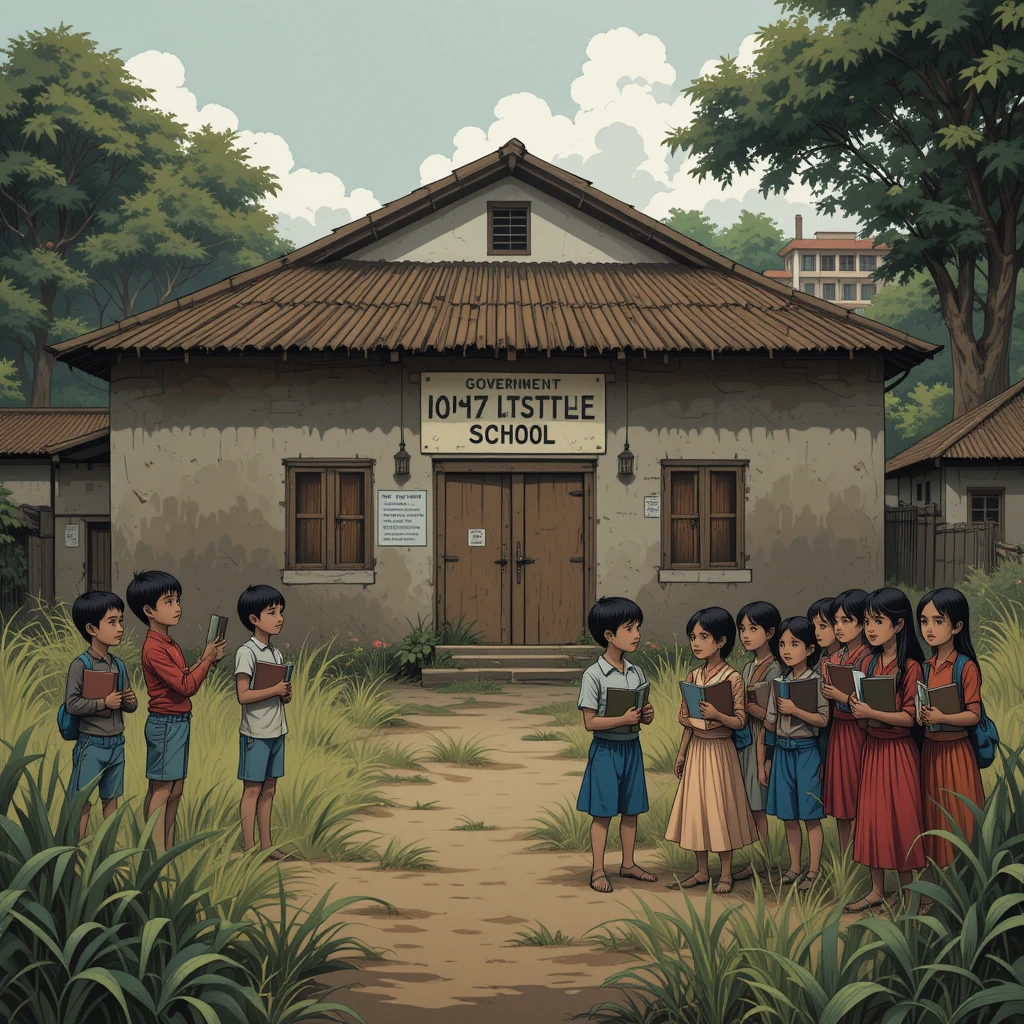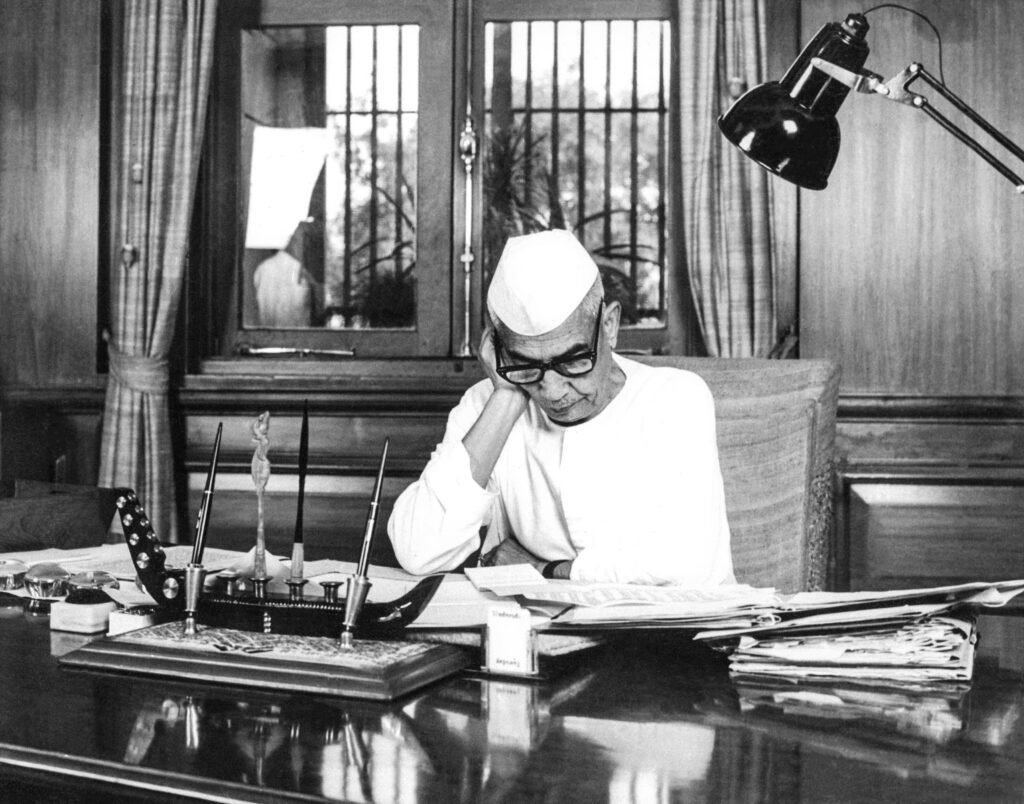India’s vision to become a developed nation by 2047, as articulated by Prime Minister Narendra Modi during his 2021 Independence Day address, is a bold ambition that encapsulates the “Amrit Kaal” — a 25-year roadmap to transform India into a global economic powerhouse. This vision, detailed in frameworks like the Union Budget 2023-24 and the Competitiveness Roadmap for India@100, emphasizes sustained economic growth of over 8% annually, inclusive development, and robust human capital formation through education, healthcare, and skilling (Invest India, 2023; Economic Survey 2023-24). However, the proposed strategies of closing government schools, increasing the cost of education and healthcare, and dismantling public sector undertakings (PSUs) raise critical questions about their alignment with this vision. This article provides an in-depth analysis of these strategies, their socio-economic implications, and alternative pathways to achieve India’s 2047 goals, supported by recent data, policy insights, and expert perspectives.

Table of Contents
The Vision for India@2047
India’s journey to developed nation status by 2047 requires transformative reforms across multiple domains, including education, healthcare, infrastructure, and economic policy. The Competitiveness Roadmap for India@100, developed by the Economic Advisory Council to the Prime Minister, outlines four key pillars: growth, jobs, productivity, and sustainability (Invest India, 2023). Achieving a per capita income comparable to developed nations (approximately $14,000–$36,000 in PPP terms) demands an average GDP growth rate of 8–9% annually, lifting India’s economy from $3.4 trillion in 2024 to $36 trillion by 2047 (Business Standard, 2023). Central to this transformation is human capital development, as India seeks to leverage its demographic dividend — with a median age of 28.8 years in 2025, among the youngest globally (World Bank, 2024).

The proposed strategies — closing government schools, making education and healthcare costlier, and shutting down PSUs — could fundamentally alter India’s trajectory. Below, we examine each strategy in detail, assessing their feasibility, potential impacts, and alignment with the 2047 vision.
Closing Government Schools: A Threat to Educational Equity
The Role of Government Schools
Government schools are the cornerstone of India’s public education system, providing free or subsidized education to over 120 million students, particularly in rural and low-income communities (Unified District Information System for Education [UDISE], 2022). The Right of Children to Free and Compulsory Education Act, 2009 (RTE Act), mandates free education for children aged 6–14, with stipulations for adequate infrastructure and pupil-teacher ratios (Wikipedia, 2025). Despite challenges like outdated curricula, teacher shortages, and infrastructure deficits, these schools are critical for ensuring universal access to education, a prerequisite for human capital development.

Trends in School Closures
Recent years have seen a trend of closing government schools in several states, often justified as a cost-saving measure. Between 2018 and 2020, Uttar Pradesh closed or merged 26,074 government schools, Madhya Pradesh 22,904, and Odisha planned to close 14,000 schools, though legal interventions reduced this to 5,227 (Telegraph India, 2022). These closures are driven by policies targeting schools with low enrollment (fewer than 50 students), citing inefficiencies due to the RTE Act’s requirement for multiple teachers per school. States argue that merging schools optimizes resources and improves quality by concentrating students in better-equipped facilities.
Socio-Economic Impacts
Closing government schools has far-reaching consequences that could undermine India’s 2047 vision:
- Reduced Access and Equity: School closures, particularly in rural areas, increase travel distances for students, often exceeding 5–10 kilometers in remote regions. This raises transportation costs and safety concerns, disproportionately affecting girls and marginalized communities (Education for All in India, 2023). The Annual Status of Education Report (ASER) 2023 notes that rural girls are 20% more likely to drop out when schools are farther than 3 kilometers, exacerbating gender disparities (ASER Centre, 2023). Meanwhile, private schools, which grew by 3.6% between 2018 and 2020, are often unaffordable (average fees of ₹20,000–₹50,000 annually) and concentrated in urban areas, limiting access for rural students (Telegraph India, 2022).
- Community Disruption: Government schools serve as community hubs, fostering social cohesion and local engagement. Their closure can disrupt village economies, reduce parental involvement, and erode trust in public institutions (Education for All in India, 2023). In states like Rajasthan, school mergers have led to protests from local communities, highlighting their cultural and economic significance (The Hindu, 2023).
- Teacher Unemployment and Quality Concerns: Closures reduce demand for teachers, leading to job losses and discouraging new entrants into the profession. In 2022, over 1.5 lakh teaching positions remained vacant in government schools, further straining quality (UDISE, 2022). This contradicts the National Education Policy (NEP) 2020’s emphasis on teacher training and professional development to achieve foundational literacy and numeracy by grade 3 (Wikipedia, 2021).
- Long-Term Economic Costs: Education is a key driver of economic growth, contributing 0.5–1% to GDP for every additional year of schooling (World Bank, 2024). Reducing access to education risks lowering India’s human capital index (HCI), currently at 0.44, far below developed nations like Singapore (0.88) (World Bank, 2024). This could hinder India’s ability to sustain 8% GDP growth, as an uneducated workforce is less productive and innovative.
Policy Misalignment
The NEP 2020 emphasizes universal access, equity, and quality education, with goals to achieve 100% gross enrollment ratio (GER) across all levels by 2030 (Wikipedia, 2021). Closing government schools contradicts these objectives, as it reduces access for marginalized groups. The Union Budget 2024-25 allocated ₹1.25 lakh crore for education, a 7.7% increase, with initiatives like PM SHRI schools and digital learning platforms to strengthen public education (Involve, 2024). Experts argue that instead of closures, India should invest in upgrading government schools with better infrastructure, technology, and teacher training (Times of India, 2024). For instance, successful models like Delhi’s government schools, which improved learning outcomes through infrastructure upgrades and teacher support, demonstrate the potential of reform over closure (The Hindu, 2024).
Making Education and Healthcare Costly: Undermining Human Capital
The Importance of Affordable Education and Healthcare
Affordable education and healthcare are critical for human capital development, enabling a healthy, skilled workforce capable of driving economic growth. The NEP 2020 aims to increase public education expenditure to 6% of GDP, while the National Health Policy 2017 targets 2.5% of GDP for health (Wikipedia, 2021; PIB, 2023). These policies recognize that accessible services are essential for inclusive development, a core pillar of India’s 2047 vision.

Education Costs: Barriers to Access
Increasing education costs would disproportionately affect low-income households, who rely on government schools and scholarships. The GER in higher education has risen from 0.7% in 1950 to 28.4% in 2020–21, with 4.14 crore students enrolled (IBEF, 2023). However, affordability remains a challenge, with private institutions charging ₹1–5 lakh annually for professional courses (Times of India, 2024). The Union Budget 2024-25 introduced e-voucher loans and digital libraries to enhance access, signaling a commitment to affordability (Indian Express, 2024).
Higher costs could reduce enrollment, particularly among women and marginalized groups, whose GER lags behind (25.2% for females vs. 31.6% for males in higher education) (UDISE, 2022). The ASER 2023 report highlights that financial constraints are a key reason for dropouts, with 30% of rural students citing costs as a barrier (ASER Centre, 2023). Privatizing education further risks creating a two-tier system, where only affluent students access quality education, undermining the NEP’s goal of equitable learning outcomes.
Healthcare Costs: A Threat to Productivity
Expensive healthcare would exacerbate India’s already high out-of-pocket expenditure (OOPE), which accounts for 48.8% of total health expenditure, among the highest globally (World Bank, 2024). The Ayushman Bharat scheme, covering over 500 million people, aims to reduce OOPE through free hospital care, a model critical for a healthy workforce (Invest India, 2023). Increasing healthcare costs could push families into poverty, with studies estimating that 55 million Indians fall below the poverty line annually due to medical expenses (Economic Times, 2024).
A healthy population is essential for productivity, with the World Health Organization estimating that a 1% improvement in health outcomes boosts GDP by 0.4% (WHO, 2023). Costly healthcare would reduce access to preventive and curative services, increasing morbidity and reducing workforce participation. For instance, non-communicable diseases like diabetes, prevalent in 11.4% of India’s population, require affordable care to manage long-term costs (Lancet, 2024). Programs like ASHA workers and community health centers are vital for last-mile delivery, which costly systems would undermine (Business Standard, 2023).
Economic and Social Consequences
Costly education and healthcare would widen inequality, reduce social mobility, and hinder India’s ability to compete globally. The World Bank recommends increasing public expenditure on education and health to 6% and 3% of GDP, respectively, to align with developed nations (World Bank, 2024). Privatization without robust regulation risks profiteering, as seen in some private hospitals charging exorbitant rates during the COVID-19 pandemic (The Hindu, 2022). Public-private partnerships (PPPs), as advocated in the Economic Survey 2023-24, offer a balanced approach, leveraging private efficiency while maintaining public oversight (Indian Express, 2024).
Shutting Down Public Sector Undertakings: Risks and Opportunities
The Role of PSUs
PSUs are integral to India’s economy, contributing 15% to GDP and employing over 1.5 million people in sectors like energy, banking, and infrastructure (Department of Public Enterprises, 2023). Companies like ONGC, NTPC, and Indian Railways ensure energy security, power supply, and connectivity, while PSU banks drive financial inclusion in rural areas. The government’s disinvestment policy, with ₹5.1 lakh crore raised between 2014 and 2023, aims to improve efficiency and reduce fiscal burdens (Business Standard, 2023). However, completely shutting down PSUs could have profound implications.
Economic Impacts
- Disruption of Strategic Sectors: PSUs dominate critical sectors like oil, gas, and railways, where private players may prioritize profits over national interests. For instance, ONGC contributes 70% of India’s domestic oil production, ensuring energy security (Invest India, 2023). Shutting down such entities could increase reliance on imports, raising costs and vulnerabilities, especially amid global supply chain disruptions.
- Fiscal Implications: While disinvestment reduces fiscal deficits, PSUs generate significant dividends (₹61,000 crore in 2022–23) and tax revenues (Department of Public Enterprises, 2023). Their closure could strain public finances, especially if private entities evade taxes or repatriate profits abroad.
- Market Dynamics: Complete privatization risks creating private monopolies, as seen in telecom, where reduced competition led to higher prices (Economic Times, 2023). The Competitiveness Roadmap for India@100advocates a balanced approach, with PSUs in strategic sectors and private players driving innovation (Invest India, 2023).
Employment and Skilling
PSUs are major employers, particularly for semi-skilled and skilled workers. Their closure could exacerbate unemployment, which stood at 8.4% overall and 18.4% for educated youth in 2022 (CMIE, 2023). The Union Budget 2024-25’s ₹1.48 lakh crore allocation for skilling and internships aims to address this, but PSU closures could undermine these efforts by reducing stable job opportunities (Indian Express, 2024). Moreover, PSUs provide training and apprenticeships, critical for Industry 4.0 skills like AI and green technology (British Council, 2024).
Social Equity and Regional Development
PSUs often operate in underserved regions, providing affordable services and infrastructure. For example, PSU banks have 60% of their branches in rural and semi-urban areas, compared to 40% for private banks (RBI, 2023). Their closure could widen regional disparities, contradicting the “Sabka Saath, Sabka Vikas” principle (Invest India, 2023). Privatization without safeguards risks prioritizing urban, affluent markets, leaving rural areas underserved.
Reform Over Closure
Experts advocate reforming PSUs through modernization, performance-linked incentives, and PPPs rather than shutting them down. The success of PSU reforms in banking, where NPAs dropped from 14.6% in 2018 to 3.9% in 2023, demonstrates the potential of targeted interventions (RBI, 2023). The Production-Linked Incentive (PLI) schemes and PM Gati-Shakti initiatives highlight the role of PSUs in achieving sustainable growth (Invest India, 2023).
Alternative Pathways to India@2047
The proposed strategies of closing government schools, increasing education and healthcare costs, and shutting down PSUs are misaligned with India’s 2047 vision. They risk exacerbating inequality, reducing access to essential services, and destabilizing the economy. Instead, the following evidence-based pathways align with the goals of inclusive, sustainable development:
- Strengthening Public Education: Increase investment in government schools to improve infrastructure, teacher training, and digital access. The NEP 2020’s focus on foundational literacy, vocational education from grade 6, and digital platforms like DIKSHA can enhance employability (Wikipedia, 2021). Scaling up PM SHRI schools and Samagra Shiksha can ensure quality education for all (PIB, 2024).
- Expanding Affordable Healthcare: Strengthen Ayushman Bharat and community health programs to reduce OOPE and improve health outcomes. Investments in primary healthcare and ASHA workers can address last-mile gaps, ensuring a healthy workforce (Business Standard, 2023).
- Reforming PSUs: Modernize PSUs through technology adoption, governance reforms, and PPPs. The success of disinvestment in Air India and PSU banks shows that partial privatization can enhance efficiency without sacrificing strategic control (Business Standard, 2023).
- Skilling for Industry 4.0: Scale up skilling programs to prepare youth for emerging sectors like AI, renewable energy, and manufacturing. The Union Budget 2024-25’s internship schemes with top companies can bridge the skill gap (Indian Express, 2024).
- Decentralized Governance and Community Engagement: Empower local governments and communities to manage education and health programs, ensuring accountability and tailored solutions. The “Sabka Prayas” ethos emphasizes collective effort for inclusive growth (Invest India, 2023).
- Sustainable Infrastructure and Innovation: Leverage initiatives like PM Gati-Shakti and PLI schemes to build modern infrastructure and foster innovation. Investments in green energy and digital connectivity can position India as a global leader (Invest India, 2023).
Conclusion
India’s ambition to become a developed nation by 2047 hinges on inclusive development, human capital formation, and economic resilience. Closing government schools, increasing education and healthcare costs, and shutting down PSUs would undermine these goals by exacerbating inequality, reducing access to essential services, and destabilizing strategic sectors. These strategies contradict the principles of the NEP 2020, National Health Policy 2017, and the Competitiveness Roadmap for India@100, which prioritize equity, accessibility, and sustainability.
Instead, India must invest in strengthening public education, expanding affordable healthcare, and reforming PSUs to balance efficiency and strategic interests. The Union Budget 2024-25’s focus on education, skilling, and infrastructure, coupled with initiatives like Ayushman Bharat and PM Gati-Shakti, provides a robust framework for achieving these goals. By harnessing its demographic dividend, embracing technology, and fostering public-private collaboration, India can achieve the 8–9% annual growth needed to become a $36 trillion economy by 2047, ensuring prosperity for all its citizens.
References
- ASER Centre. (2023). Annual Status of Education Report (ASER) 2023.
- Business Standard. (2023). To be a developed nation by 2047, India needs to change a range of policies.
- CMIE. (2023). Unemployment in India: Consumer Pyramids Household Survey.
- Department of Public Enterprises. (2023). Public Enterprises Survey 2022-23.
- Economic Survey 2023-24. (2024). Ministry of Finance, Government of India.
- Economic Times. (2023). Privatisation in India: Progress and challenges.
- Economic Times. (2024). India’s healthcare expenditure: Challenges and opportunities.
- Education for All in India. (2023). Impact of School Closures & Mergers on Access to Education in India.
- IBEF. (2023). Higher Education in India 2047: Transforming the Future of Learning.
- Indian Express. (2024). Education Budget 2024 Updates: Paid internships, schemes to benefit women; other takeaways.
- Involve. (2024). Bridging Aspirations and Reality: A Critical Analysis of India’s Education Budget 2024-25.
- Invest India. (2023). Developed India: Vision & Progress Towards 2047.
- Lancet. (2024). Non-communicable diseases in India: Prevalence and policy response.
- PIB. (2023). National Health Policy 2017: Progress and challenges.
- PIB. (2024). Year End Review – Department of School Education & Literacy.
- RBI. (2023). Annual Report on Banking Sector Performance.
- Telegraph India. (2022). 51,000 government schools closed within a year, says report.
- The Hindu. (2022). Private healthcare costs during COVID-19: A case study.
- The Hindu. (2023). Rajasthan school mergers: Community protests and policy debates.
- The Hindu. (2024). Delhi government schools: A model for reform.
- Times of India. (2024). Interim Union Budget 2024-25: The need for 6% of GDP in the Indian education sector.
- UDISE. (2022). Unified District Information System for Education Report 2021-22.
- Wikipedia. (2021). National Education Policy 2020.
- Wikipedia. (2025). Education in India.
- World Bank. (2024). Human Capital Index 2024: India.
- WHO. (2023). Health and economic growth: Global perspectives.


